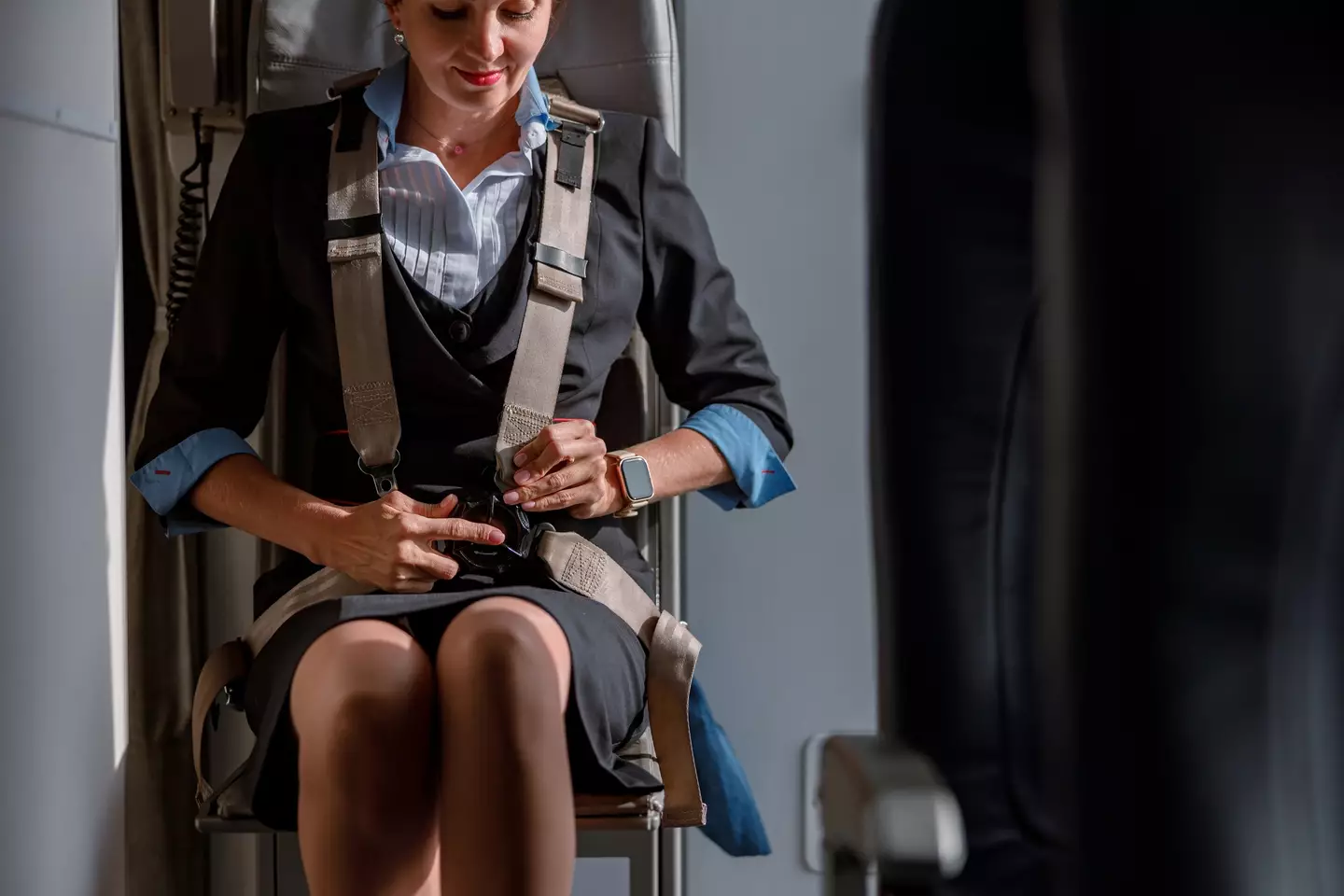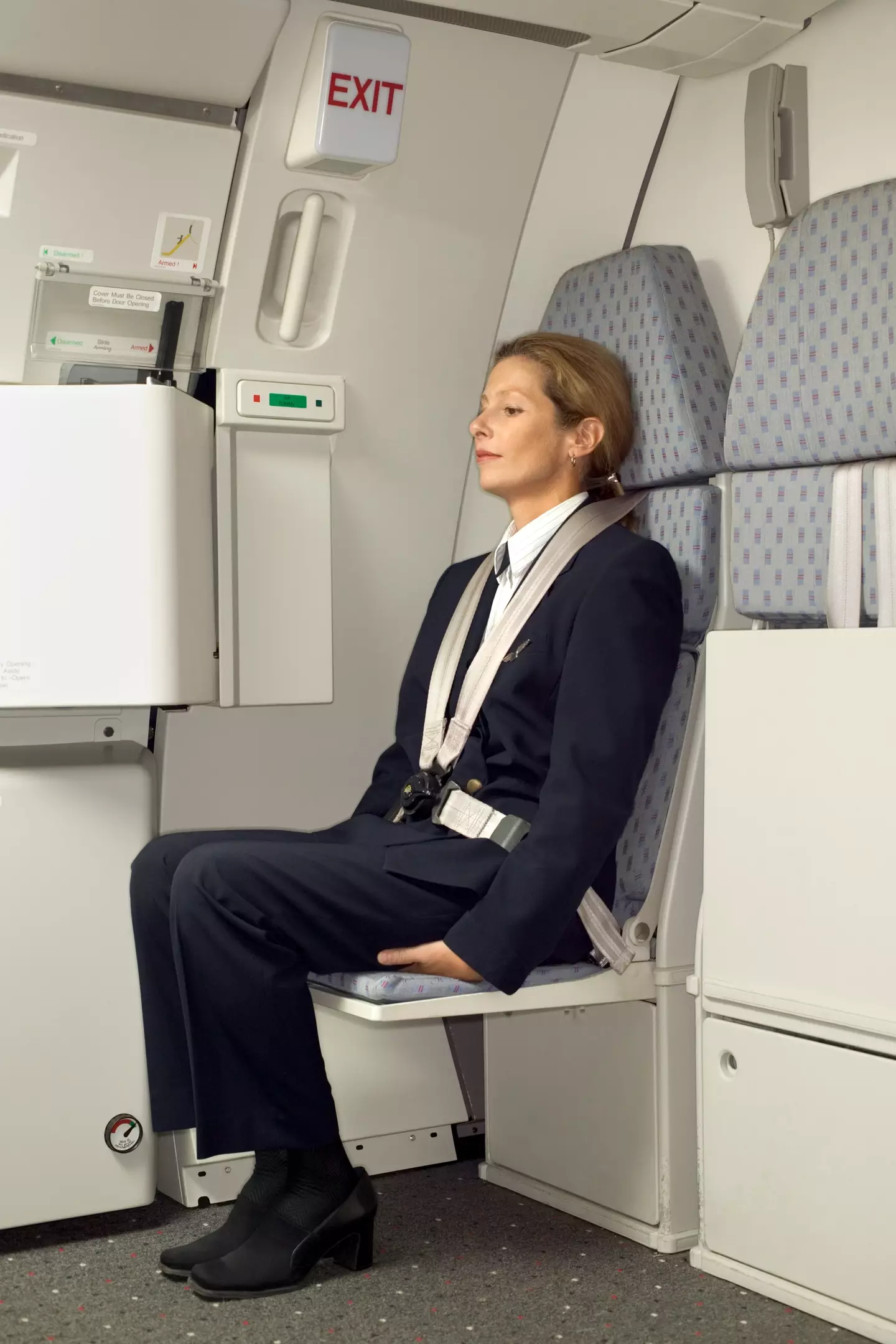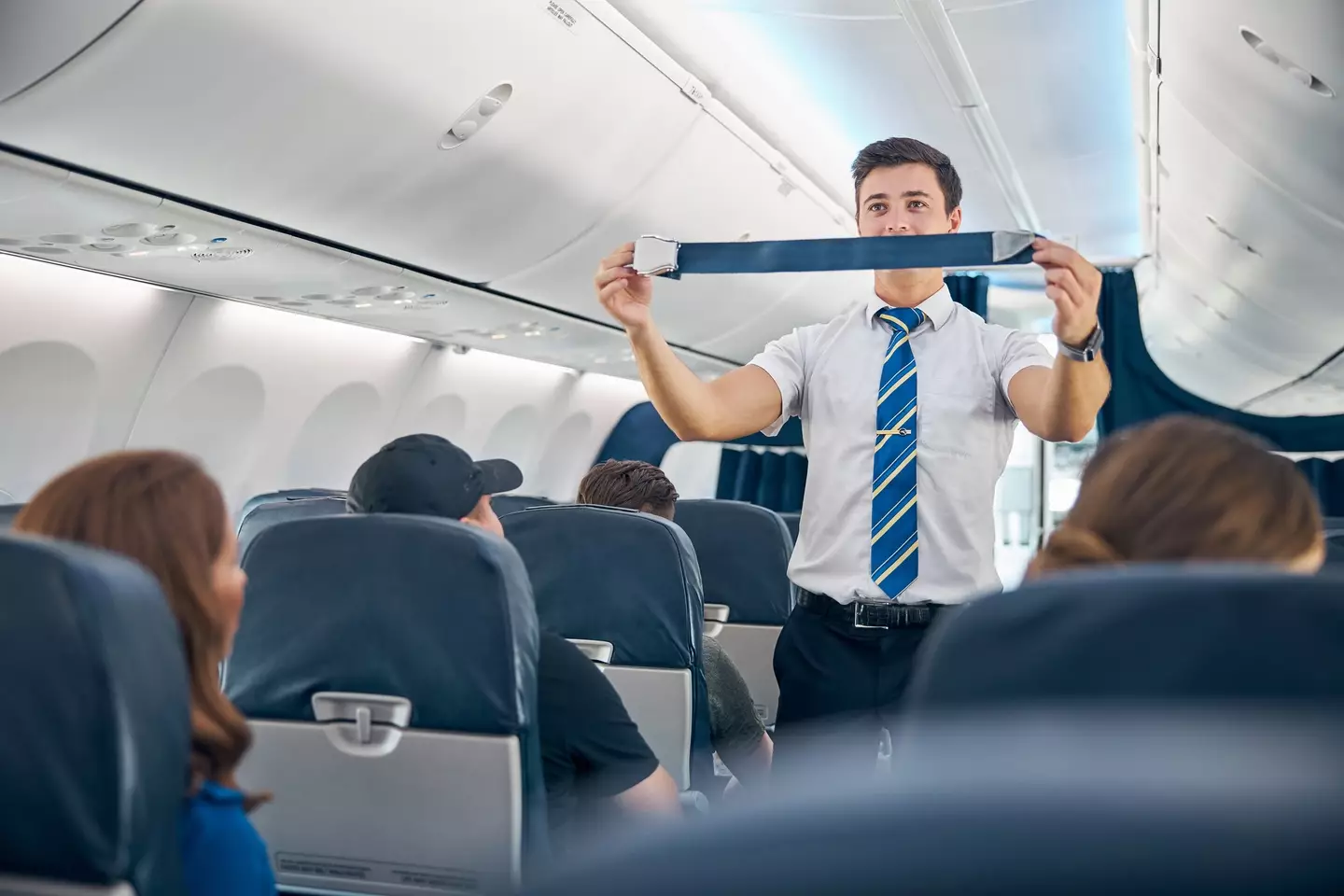Have you ever wondered why flight attendants sit on their hands during takeoff, taxiing, and landing? While it might seem like a quirky habit or a way to pass the time, there’s a very important reason behind it. It’s not just for comfort or to keep their hands warm—this behavior is part of a critical safety protocol designed to protect both the crew and passengers during potentially dangerous flight phases.
As frequent flyers know, flight attendants follow strict safety guidelines throughout the flight. One of these guidelines includes adopting a specific position during takeoff and landing, known as the “brace position.” Here’s why sitting on their hands is an essential part of this procedure and how it helps ensure a safer flight for everyone.
The Brace Position: A Key Safety Measure
The brace position is designed to limit movement and reduce the risk of injury in the event of an unexpected impact. Flight attendants, like passengers, are required to adopt this position during takeoff, landing, and when taxiing. But why specifically are they advised to sit on their hands?
Henny Lim, a flight attendant for Cebu Pacific, explained that the primary reason for sitting on hands during these critical moments is to keep the body still. The goal is to keep limbs and the spine restricted to minimize movement and potential injury. This rigid pose prevents unnecessary shifting during an emergency, reducing the chances of injury if the aircraft experiences an impact.
“The aim is to keep the body in a rigid pose so that if there was any impact from an unplanned emergency, the body is damaged less,” Henny said. This adjustment in posture is crucial for keeping both flight attendants and passengers safer during emergencies.
Why Flight Attendants Sit on Their Hands
Flight attendants’ safety is just as important as that of the passengers. By sitting on their hands, they can better ensure they’re prepared to respond to any emergency. Sitting this way helps reduce the movement of the arms, keeping them in a position that can minimize injury.
In addition to safety, sitting on the hands may also help flight attendants stay alert. Anusha Pratima, a fellow flight attendant, explained that the crew must always remain vigilant for any potential danger during critical phases of the flight. Sitting in a brace position helps maintain this heightened awareness while keeping the body in a position that limits movement.
“I personally prefer to sit on my hands because it keeps them warm,” Anusha admitted. While the practical safety benefits are the primary reason, it’s no secret that the cabin temperature can be quite chilly, and this simple position helps alleviate some of the discomfort.


Cabin crew have to sit in a certain position for taxi, takeoff and landing (Getty Stock)
Changes in Guidelines and Variations
Though sitting on hands has been the traditional protocol for many years, guidelines have evolved. Some flight attendants now prefer to sit with their hands on their laps instead, depending on airline-specific recommendations and personal comfort. Regardless of the slight variations, the primary goal remains the same: ensuring the crew is in the best possible position for both safety and preparedness.
The concept of the brace position for passengers is slightly different, as passengers are instructed to bend forward and place their heads against the seat in front. Their hands are to be placed flat to the left and right beside their head, creating a more compact position to reduce potential injury in case of an emergency landing.


Crew are typically advised to sit on their hands as part of a brace position (Getty Stock)
Another flight attendant called Anusha Pratima echoed similar sentiments on a Quora thread.
A Comparison: Passenger vs. Crew Brace Position
It’s important to note that while flight attendants and passengers adopt similar brace positions, the specifics do vary. Passengers are instructed to place their hands against the seat in front of them, while crew members have their arms in a slightly different position—sitting on their hands in a more relaxed manner.
Passengers are also advised to bend forward significantly, which isn’t typically part of the flight attendant’s position. These variations are all designed with the same goal in mind: to keep the body as secure and immobile as possible during critical moments.
The Importance of Flight Attendant Safety
Flight attendants play a crucial role in ensuring the safety of everyone aboard the flight. Not only are they responsible for assisting passengers, but they also ensure their own safety by adhering to the strict safety protocols put in place by airlines.
By adopting the brace position during takeoff, landing, and taxiing, they’re minimizing the risk of injury during unexpected situations. The importance of these safety measures cannot be overstated, as they help flight attendants maintain their readiness to assist passengers and protect their own well-being if an emergency arises.


Flight attendants have to ensure their own safety, as well as passengers’ (Getty Stock)
She did also admit that she personally prefers to sit on her hands though because it keeps them warm.
Additional Safety Protocols and Crew Responsibilities
Flight attendants are trained to handle emergencies of all kinds, from turbulence to evacuations. They undergo rigorous training to ensure they can react quickly and efficiently during critical moments. By remaining in the brace position, they maintain a state of readiness that allows them to react swiftly if needed.
Moreover, flight attendants are always alert for any potential dangers during the flight, and maintaining a proper position, such as sitting on their hands, ensures they are not only physically prepared but also mentally sharp. This is part of their commitment to keeping everyone aboard safe and secure.
Conclusion: Flight Attendants’ Commitment to Safety
While it may seem like a small gesture, flight attendants sitting on their hands is an essential safety protocol that helps ensure their safety and that of the passengers during critical moments of the flight. This practice is just one example of the many precautions flight crews take to ensure a smooth and secure flight.
For passengers, it’s comforting to know that the flight attendants are highly trained to handle emergencies and that their safety procedures, including sitting on their hands, are carefully designed to limit risk. If you’re ever wondering why flight attendants do certain things during takeoff and landing, now you know—it’s all about keeping everyone safe.
For more insights into how safety and awareness play a role in our daily lives, check out these articles:
- 10 Signs You’re Eating Too Much Sugar
- 7 Words Depressed People Use More Often: How to Recognize the Signs and Offer Support
Understanding safety measures, whether in the air or on the ground, can give you peace of mind and a greater appreciation for the work that goes into keeping us all safe.


